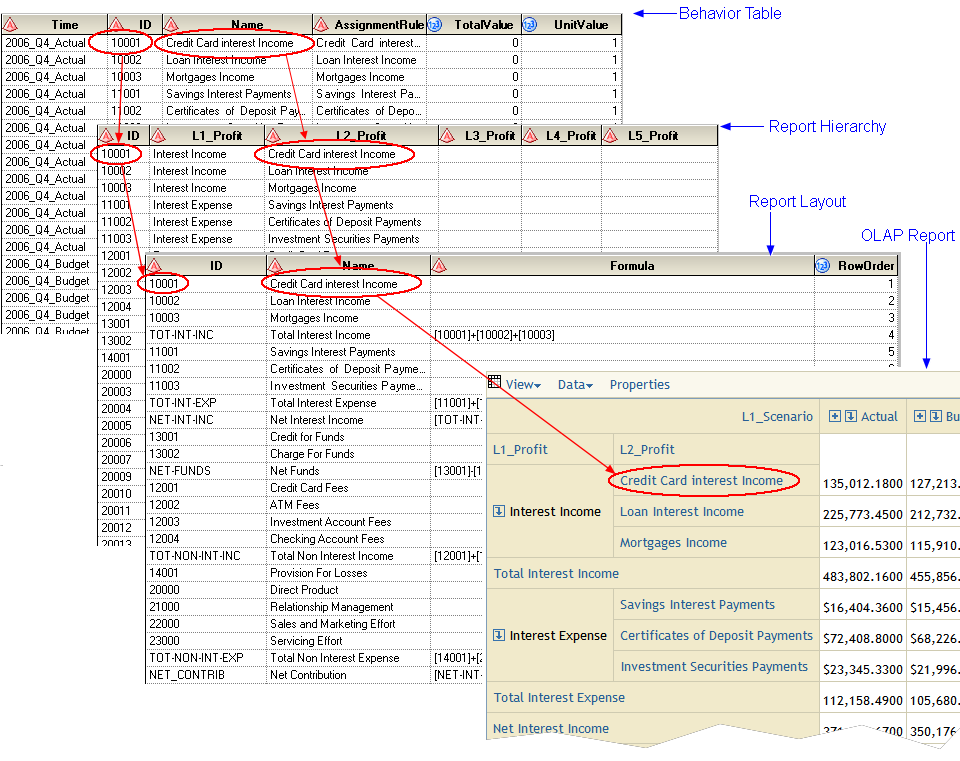Validity of Behavior Table, Report Hierarchy,
and Report Layout
The following conditions must be respected in defining a behavior table,
report hierarchy, and report layout:
- Every distinct ID in the behavior table must be represented by a row in the report
hierarchy. And every row in the report hierarchy must be represented in the behavior table. The IDs must match.
If a behavior table ID is missing from a report hierarchy, the following message
is displayed during the generation of a cube that uses the report hierarchy:
A lower dimension level, for the specified dimension <name
of hierarchy table>, needs to be selected for this report layout: <name of
missing behavior>.
- Every row in the layout table (not counting calculated rows) must be
represented in the hierarchy table. However, not every row in the hierarchy table need be represented in the layout table (the layout table can represent a subset of the hierarchy table). When rows do correspond, both the names and IDs must match.
If the IDs do not match, no error message is issued, but the
layout row will be missing from the report.
If the names do not match, the following message is displayed during
cube generation:
A lower dimension level, for the specified dimension <name
of hierarchy table>, needs to be selected for this report layout: <name of
layout row that is missing a corresponding entry in the hiearchy table >.
The following graphic summarizes the relationships among the behavior table, report hierarchy, report layout, and resulting OLAP report. Note that the ID in the behavior table matches the ID in the report hierarchy table and in the report layout table. The software currently also requires that the associated name in the report hierarchy table match the name in the report layout table, but the primary key is the ID field.

See also:

